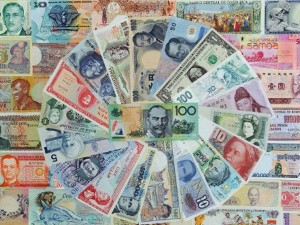BSP: Balance of payments stood at surplus in Feb.

The Philippines’ balance of payments hit a surplus of $588 million in February as foreign currencies’ inflows exceeded the outflows. AFP PHOTO
Foreign currencies that had flowed into the country in February exceeded the outflows, with the Philippines’ balance of payments (BOP) hitting a surplus of $588 million.
This was a reversal of the $133-million deficit reported in the same month last year.
The Bangko Sentral ng Pilipinas said the BOP surplus for the month was largely driven by the government’s borrowings from foreign creditors led by the Asian Development Bank and the income of the central bank from its investments in foreign portfolio assets.
The country’s BOP performance in February brought the total surplus for the first two months of the year to $1.45 billion. This figure, however, was 1.4-percent lower than the $1.47 billion recorded in the same period last year.
BOP is a record of the country’s commercial transactions with the rest of the world.
A surplus in the BOP helps beef up the country’s total reserves of foreign exchange, or the gross international reserves (GIR).
The GIR currently stands at a record high of about $78 billion.
According to BSP Governor Amando Tetangco Jr., the BOP surplus so far this year indicates that the country continues to enjoy a comfortable level of external liquidity, which will help prevent unwarranted depreciation of the peso in case external shocks lead to exchange rate pressures.
“External liquidity remains healthy and is expected to provide fundamental support to the peso,” Tetango said in a text message to reporters.
The central bank said it would maintain a policy of allowing a market-determined exchange rate. But it still would intervene in the market from time to time to avoid any sharp and sudden rise or fall of the peso.
Monetary officials said too much volatility would hurt businesses and the economy.
Economists said that in cases of unfavorable developments in the global economy, there is a tendency for investors to pull out funds from emerging markets like the Philippines, thereby causing depreciation pressures on local currencies.
But with enough reserves of foreign exchange, the BSP can use these resources to buy pesos and thus temper its depreciation.
According to BSP’s projections, the country’s BOP will hit a surplus of at least $2.8 billion by the end of this year.
In making their projection, monetary officials have taken into account the favorable outlook on other sources of foreign exchange—mainly remittances, export earnings, and investments in the business process outsourcing sector.
On remittances, the BSP expects the amount to grow by 5 percent this year to over $21 billion due to sustained demand for Filipino workers by employers in various labor markets.
Officials said that despite lingering economic problems in the eurozone, rising demand for Filipino workers in alternative labor markets, such as those in the Middle East, continued to provide a critical boost for the Philippines.
The country is also expected to reverse last year’s contraction in export earnings given favorable developments in the United States, the Philippine’s biggest export market.
Employment figures are rising in the United States, a development economists said would lead to a rise in demand for imported goods, such as those coming from the Philippines.
